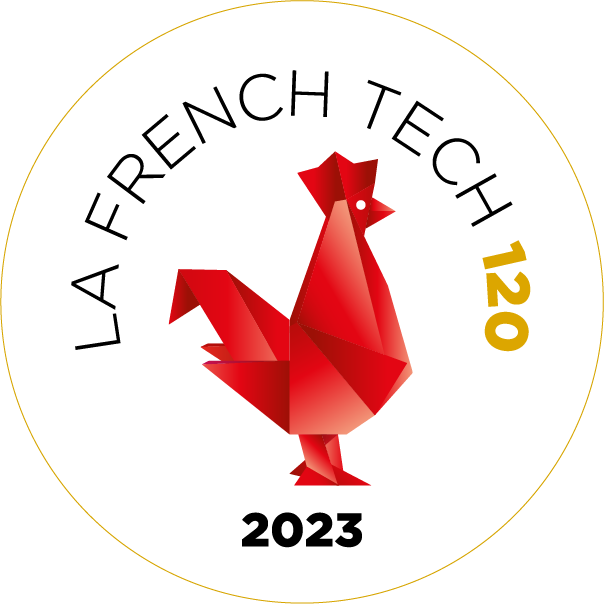How satellite connectivity optimizes industrial IoT

The Internet of Things (IoT) is a digital revolution that bears no name. Thanks to satellites, connected objects and their sensors, we can now retrieve precious data from these objects and use it in industry too, to monitor production systems, anticipate malfunctions, track the transport of goods, or be alerted to anomalies, for example.
Kinéis' spatial IoT connectivity is at the heart of this digital revolution. Because it covers the entire surface of our planet (including white zones), and because the data collected by the constellation is transmitted in near-real time, it breaks down the barriers of space and time, making it possible to monitor industrial activities virtually instantaneously, from any point on the globe.
With its satellite IOT connection, Kinéis is contributing to the digital transformation of industry, known as Industry 4.0 or the fourth industrial revolution.
Based on 3 principles - tracking, monitoring and alerting - Kinéis' space connectivity applications for the digital transformation of industry are numerous, with considerable benefits for industrial activities.
IoT sensors: predictive maintenance to optimize production tools
Thanks to satellite IoT sensors and their extensive coverage, companies can monitor the state of their production equipment in near real time, anywhere in the world. Access to this data from anywhere in the world means they can detect potential malfunctions and anticipate possible breakdowns through predictive maintenance. The company optimizes its production and maintenance systems (reducing accidental production stoppages and repair costs).
Better energy management thanks to space IoT
The data retrieved by satellite IoT connectivity can, for example, indicate the level of energy consumption at industrial production sites far from the areas covered. This information can be used to monitor energy consumption data, thereby reducing the company's energy bill. This is no mean feat at a time when the carbon footprints of economic players are being monitored.

Thanks to IoT satellites, the agri-food industry is developing precision farming. IoT sensors dedicated to the world of agriculture provide precise data on soil moisture, temperature and crop health, enabling farmers to optimise the use of water, fertilisers and pesticides. In the mining and oil industries, spatial IoT enables better management of natural resources by monitoring the environmental conditions of operations to minimise the ecological impact.
Reducing environmental impact and improving resource management
Using sensors, satellites can monitor pollution levels and greenhouse gas emissions, helping companies to comply with environmental regulations and adopt greener, more sustainable practices for their operations. For water-intensive industries, space-based IoT connectivity is helping to monitor and manage water consumption, including sensors that can detect leaks in distribution network pipelines - of considerable benefit in remote areas with little human control. These new solutions thus contribute to a more sustainable use of resources through Industry 4.0.

Kinéis' satellite IoT also serves the environment. One of the solutions that illustrates this application is the early detection of forest fires. These environmental disasters usually occur in white zones, beyond the reach of terrestrial networks. Thanks to IoT sensors that send an alert message to the satellites in the Kinéis constellation when a fire breaks out, emergency services can receive the information in no more than 15 minutes. This considerably reduced response time helps to minimise the impact of fires on the environment. These same sensors can also be placed along electricity or rail networks that can cause fires to start unintentionally.
Improved quality of goods transport
Production conditions such as temperature, humidity and pressure can be measured by IoT sensors to ensure that products are manufactured and transported under the right conditions.
In the example of refrigerated transport, temperature sensors indicate compliance with the cold chain. If the temperature rises, they send an alert message so that the deviation can be corrected quickly, guaranteeing that the goods meet hygiene standards. This prevents any risk of damage, limiting waste and potential poisoning.
More accurate tracking of logistics and stock management
Satellite IoT systems make it possible to track inventories and shipments in near real time. Asset and goods tracking sensors provide information on the location and condition of products. Companies can maximise the transport routes for their goods, improve stock management, reduce inventory errors and optimise their supply chain.
Improving safety at work thanks to IIOT
Industrial IoT devices can also be used to monitor working conditions and identify dangerous situations. For example, IIot sensors can detect abnormal gas levels, immediately alerting workers on site and managers remotely. This enhances safety in the workplace.
Automation and remote control
IoT systems enable greater automation of industrial processes, with remote control of industrial equipment and production systems. The company reduces the need for human intervention, increases the precision of operations and manages its installations remotely and efficiently.
In an increasingly competitive global market, new spatial IoT technologies are providing industries with precise and useful data in near real time to optimise productivity, improve product safety and quality, and reduce costs, while respecting sustainability. Companies are better prepared to make decisions that are adapted to the situation. As a result, they can react more quickly to change and manage their resources more effectively, while reducing their impact on the environment. It's a way of being more competitive in the global marketplace.
Writer : Sébastien Martignac


About us
Created in 2018, Kinéis is a satellite IoT operator.
© kineis - IoT everywhere - 2023
Contact us
Adress
11, rue Hermès
31520 Ramonville-Saint-Agne
France
Phone
+ 33 5 61 39 47 00
Links
FAQ
Press
Newsletter
News
Privacy Policy
Cookie policy
Sitemap
Let's stay connected






